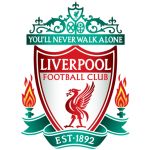UEFA’s Europa League competition is the confederation’s second-tier tournament, standing only behind the Champions League in terms of both prestige and the financial rewards associated with qualifying for the Champions League.
However, for some clubs and players, the Europa League is their only pathway to playing any form of continental football, which makes qualifying for it an attractive proposition for the so-called 'smaller clubs'.
The Champions League, or as it was known at the time, the European Cup, was established nearly 70 years ago in 1955, with the only other UEFA-affiliated competition being the European Cup Winners’ Cup, which was contested only between the winners of domestic cup competitions across Europe’s leagues.
Aside from those two, the only other competition was the Inter-Cities Fairs Cup, which ran from 1955 until 1971, and while in some circles the competition was thought of as a predecessor of sorts to what we now know as the Europa League, it was ultimately never recognised as an official tournament by UEFA, and as such, the records of any participating teams are not taken into consideration by UEFA as part of a club's European record.
After its 1970/71 iteration, that competition was abolished and subsequently replaced with the UEFA Cup (which is what is considered to be the first proper edition of this competition). The UEFA Cup first kicked off in the 1971/72 season and would remain under that name for the following 38 years, when in 2009, it was rebranded as the UEFA Europa League.

The UEFA Cup’s format was one that fans today would not be used to at all – for example, the finals was always played as a two-legged affair up until 1997/98, while an actual group stage was only introduced in 2004/05 with the tournament having previously been played as two-legged straight knockout matches over five rounds.
But, a central theme of the rebrand to the Europa League was not only its new name, but also the format change the competition underwent – among other things, an additional qualifying round was implemented, and an expanded and proper group-stage phase consisting of 12 groups of 4 teams (then followed by the standard knockout phase) was also brought in, with there no longer being a first-round preceding the group stage as had previously been the case. Just a few years later, it was decided that the winners of the competition would be given a Champions League berth for the following campaign for their efforts.
Over the years, the competition has grown in popularity and has become a way for many clubs to taste playing in Europe, as well as becoming that aforementioned route through to the Champions League for the eventual winner. It has been won by several well-known clubs across Europe, with Spanish side Sevilla currently the record winners having won it an astonishing 7 times.
The likes of Juventus, Liverpool and Atletico Madrid have each have 3 wins to their names, with other clubs such as Real Madrid, Porto, Feyenoord and Chelsea each lifting the trophy twice. Other notable clubs to have tasted success include the likes of Napoli, Parma, Ajax, Galatasaray, Bayern Munich and Eintracht Frankfurt.
So with that said, let's take a quick look through some of the highest-scoring matches to have taken place in the competition's history. (Note - results from qualifying/preliminary/play-off rounds have been excluded - only matches in the competition proper have been taken into account).














